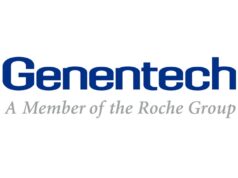
Endovascular therapy (EVT) has been deemed safe and effective in patients with ischaemic stroke caused by an anterior circulation large-vessel occlusion (LVO) who present 6–24 hours from onset, or last seen well, who were selected on the basis of the presence of collateral flow on a computed tomography angiography (CTA).
In light of this finding from the MR CLEAN-LATE trial—which is now published in The Lancet and was also presented at last year’s World Stroke Congress (WSC; 26–29 October, Singapore)—study authors Susanne Olthuis (Maastricht University Medical Center, Maastricht, The Netherlands) et al assert that “selection of patients for endovascular treatment in the late window could be primarily based on the presence of collateral flow”.
Initially positing that EVT via a mechanical thrombectomy procedure has been shown previously to be safe and effective in anterior circulation LVO stroke patients who present within an early time window of <6 hours, Olthuis et al set out to assess this approach in the later time window of 6–24 hours from symptom onset, or time last seen well.
MR CLEAN-LATE—a Phase 3, multicentre, open-label, blinded-endpoint, randomised controlled trial (RCT)—was set up to this end, and conducted across 18 stroke intervention centres in The Netherlands. In The Lancet, the authors detail that patients aged 18 years or older with ischaemic stroke, presenting in the late window with an anterior circulation LVO and collateral flow on CTA, and a neurological deficit score on the National Institutes of Health Stroke Scale (NIHSS) of ≥2, were included. Patients eligible for late-window endovascular treatment were treated according to national guidelines based on criteria derived from the DAWN and DEFUSE-3 trials, and excluded from MR CLEAN-LATE enrolment.
Patients were randomly assigned on a 1:1 basis to receive EVT (treatment group) or no EVT (control group), in addition to best medical treatment, Olthuis et al detail. The trial’s primary outcome was modified Rankin scale (mRS) score at 90 days after randomisation, while safety outcomes included all-cause mortality at 90 days post-randomisation and symptomatic intracranial haemorrhage (ICH). All randomly assigned patients who provided deferred consent or died before consent could be obtained comprised the modified intention-to-treat population, in which the primary and safety outcomes were assessed. Analyses were adjusted for predefined confounders, the authors add, and treatment effects were estimated with ordinal logistic regression and reported as an adjusted common odds ratio (OR) with a 95% confidence interval (CI).
Between 2 February 2018 and 27 January 2022, a total of 535 patients were randomly assigned in MR CLEAN-LATE, and 502 (94%) patients provided deferred consent or died before consent was obtained—255 of whom comprised the endovascular treatment group and 247 of whom were included in the control group (52% [261/502] female).
Olthuis et al go on to report that the median mRS score at 90 days was lower in the treatment group (3; interquartile range [IQR] 2–5) than in the control group (4; IQR 2–6), adding that they observed a shift towards better outcomes on mRS for the endovascular treatment group (adjusted common OR 1.67; 95% CI 1.20–2.32). In addition, all-cause mortality did not differ significantly between the two groups (24% [62/255] vs 30% [74/247]; adjusted OR 0.72; 95% CI 0.44–1.18). However, more symptomatic ICHs occurred in the treatment group (17 [7%]) compared to the control group (four [2%]; adjusted OR 4.59; 95% CI 1.49–14.10).
“Due to the results of the MR CLEAN-LATE trial, more late-presenting stroke patients are now eligible for endovascular treatment and will overall have better outcomes,” Olthuis said, speaking to NeuroNews. “Hopefully, stroke guidelines will soon recommend the collateral-based selection that we used in our trial because it is more inclusive, but also because it has a few major advantages compared to current selection strategies, which were based on the DAWN and DEFUSE-3 trials. For one, collateral-based selection is less complex and therefore more suited for the emergency setting. Another benefit is that advanced imaging is no longer a necessity—consequently, stroke patients presenting in the late window can be selected for treatment even in centres with limited access to these advanced imaging modalities.”












